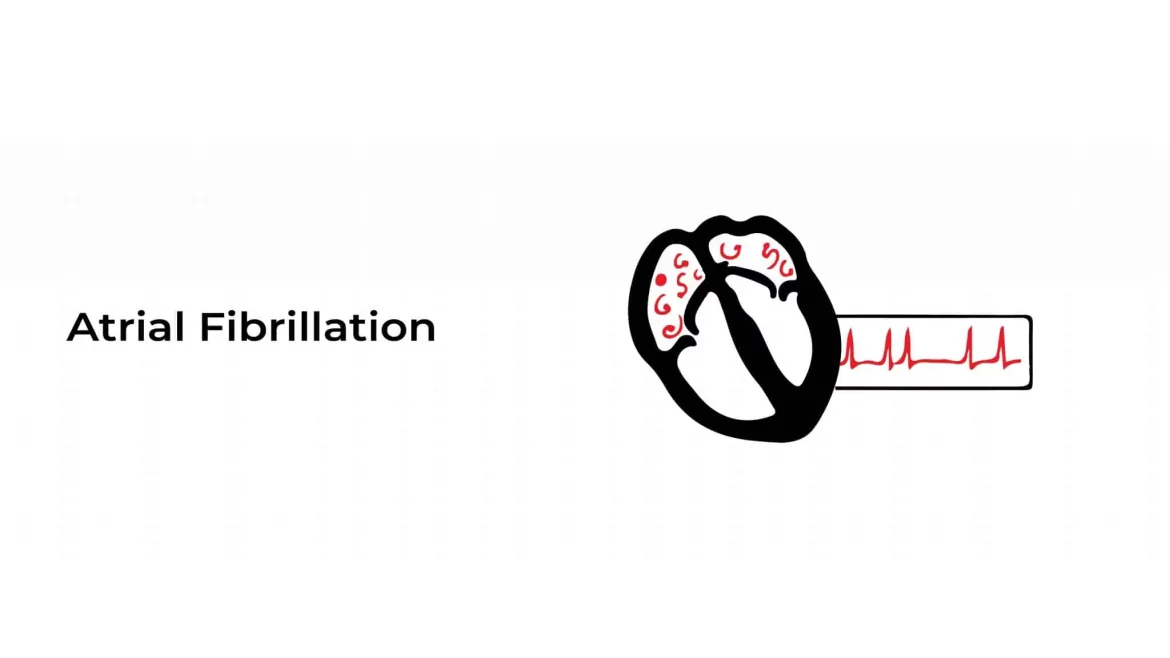In the intricate world of cardiac dysrhythmias, fibrillation stands out as a profound anomaly characterized by the rapid, irregular contractions of the heart’s muscular fibers. It is a dire medical condition that demands immediate attention. Among its types, two are prominently recognized: atrial fibrillation (AF) and ventricular fibrillation (VF). While both conditions are serious and can lead to significant health complications, they vary in terms of pathophysiology, clinical manifestations, complications, and urgency of treatment. This article embarks on a detailed exploration to discern which type of fibrillation poses the most grave threat to human health, supported by clinical evidence, treatment outcomes, and the physiological impact on the heart.
The Essence of Fibrillation: A Cardiological Overview
Fibrillation refers to a chaotic, rapid heart rhythm originating from the heart’s electrical system. This aberration results in inefficient blood pumping, leading to a cascade of potential systemic effects. Understanding its types is crucial for effective management and treatment.
1. Atrial Fibrillation (AF): AF is characterized by disorganized electrical signals in the heart’s upper chambers, the atria, causing them to fibrillate, or quiver, leading to an irregular and often rapid heart rate.
2. Ventricular Fibrillation (VF): VF occurs when disorganized electrical signals cause the heart’s lower chambers, the ventricles, to quiver ineffectively, halting the blood flow to the body and necessitating immediate medical intervention.
Pathophysiology and Impact
1. Atrial Fibrillation: The onset of AF involves multiple reentrant circuits typically forming around the pulmonary veins, leading to the atria’s rapid, chaotic contractions. This results in an irregularly irregular rhythm, discernible on an electrocardiogram (ECG). AF reduces cardiac output due to the loss of atrial contraction (atrial kick), which normally contributes to 20-30% of ventricular filling.
2. Ventricular Fibrillation: VF is the most immediately life-threatening arrhythmia. It arises from multiple reentrant circuits within the ventricles, leading to a rapid, erratic heartbeat that prevents the heart from pumping blood, causing cardiac arrest. Unlike AF, VF leads to immediate hemodynamic collapse and requires prompt defibrillation.
Clinical Manifestations and Complications
The clinical manifestations of AF and VF significantly differ due to their distinct impacts on cardiac function and systemic circulation.
1. Atrial Fibrillation: Symptoms of AF can range from being asymptomatic to experiencing palpitations, fatigue, dyspnea, dizziness, and angina. The major complication of AF is thromboembolism, including stroke, due to blood stasis in the fibrillating atria and formation of atrial thrombi.
2. Ventricular Fibrillation: VF is marked by sudden collapse, loss of consciousness, and absence of pulse and blood pressure, leading to sudden cardiac death if not immediately treated. The absence of effective cardiac output causes cerebral hypoxia, which can lead to irreversible brain damage within minutes.
Epidemiology and Risk Factors
Understanding the prevalence and risk factors associated with AF and VF sheds light on their impact on public health.
1. Atrial Fibrillation: AF is the most common sustained cardiac arrhythmia, affecting millions worldwide. It is more prevalent in the elderly, with other risk factors including hypertension, heart failure, coronary artery disease, valvular heart disease, diabetes, and obesity.
2. Ventricular Fibrillation: VF is less common than AF but is the most common arrhythmia leading to sudden cardiac death. It often occurs in the context of acute myocardial infarction, cardiomyopathies, and ischemic heart disease. Non-cardiac factors such as electrolyte imbalances and drug toxicity can also precipitate VF.
Treatment Modalities and Outcomes
The treatment strategies for AF and VF diverge significantly, reflecting their differences in severity and clinical outcomes.
1. Atrial Fibrillation: Management includes rate control, rhythm control, and anticoagulation to prevent thromboembolic events. Options vary from medication to electrical cardioversion, catheter ablation, or surgical maze procedures.
2. Ventricular Fibrillation: VF requires immediate CPR and defibrillation to restore a viable rhythm. Post-resuscitation care focuses on treating the underlying cause and may include therapeutic hypothermia, coronary reperfusion strategies, and implantation of a cardioverter-defibrillator (ICD) in selected cases.
Comparative Analysis: The Gravity of VF Over AF
While AF and VF are both significant arrhythmias, the immediacy and lethality of VF position it as the most serious form of fibrillation. VF leads to sudden cardiac arrest, with survival rates plummeting for each minute defibrillation is delayed. In contrast, AF, although associated with significant morbidity, particularly due to stroke, allows for a window of therapeutic intervention to mitigate risks and manage symptoms.
Preventive Strategies and Public Health Implications
Prevention and early detection are pivotal in managing the risks associated with fibrillation. For AF, strategies include controlling blood pressure, managing diabetes, weight reduction, and moderating alcohol intake. For VF, preventive measures are often centered around managing heart disease risk factors and early intervention in acute coronary syndromes.
Conclusion
In the spectrum of cardiac fibrillation, VF emerges as the most immediately life-threatening condition, necessitating swift intervention to avert fatal outcomes. While AF poses significant health risks, particularly regarding stroke, its clinical management offers pathways to mitigate these risks. The dichotomy in the severity between AF and VF highlights the essential need for public and clinical awareness, rapid response systems for VF, and comprehensive management strategies for AF to improve patient outcomes and quality of life. Both forms of fibrillation underscore the critical importance of heart health in the broader context of public health and the ongoing need for research and innovation in cardiac care and management.

